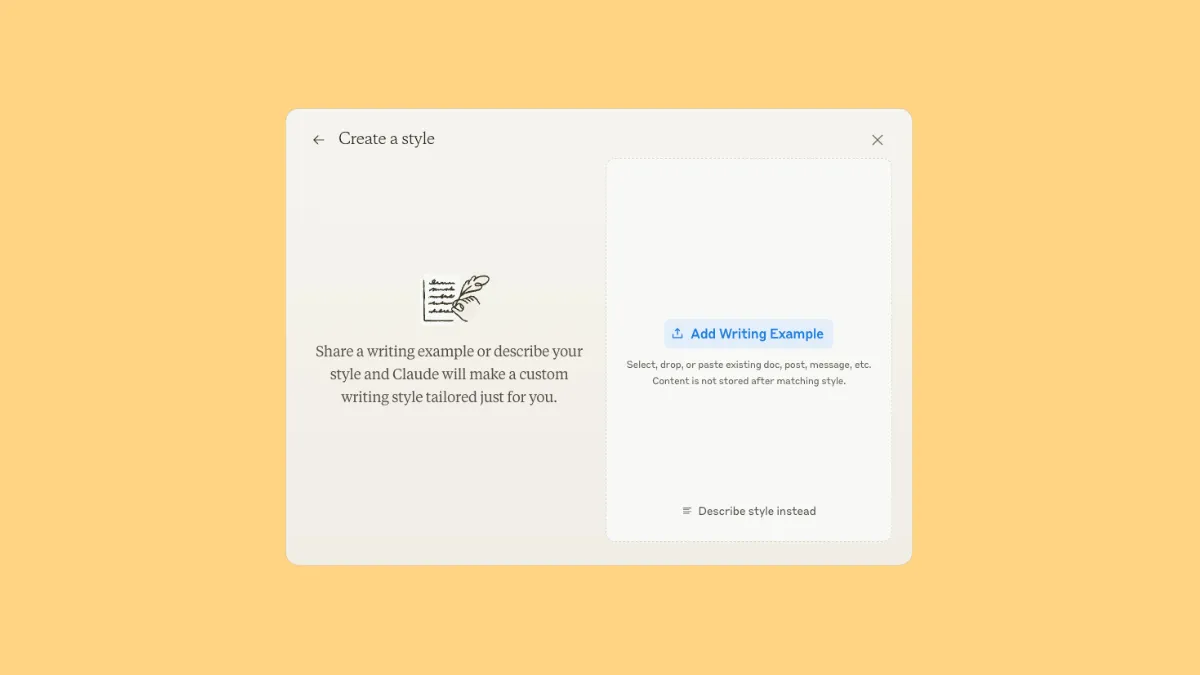Anthropic has updated its Claude AI allowing users to customize how it communicates and responds to prompts and queries. This is possible through a new feature called 'Styles', which is available to all users and allows you to choose from a selection of preset styles or train the AI to match your communication style by uploading samples. This can help Claude meet different types of requirements and offer responses in explanatory, concise, or formal tones.
Using preset styles
- Visit the Anthropic login page using a web browser and sign in to your account.
- You will see the new 'Choose style' dropdown menu in the chat box. Click on it to see the available presets.
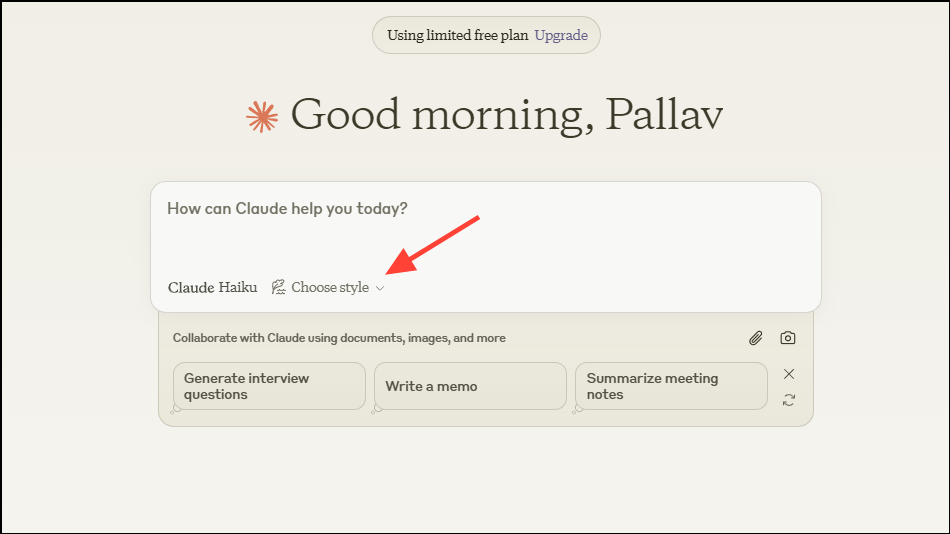
- Hovering your cursor over the different presets will show you how the AI will respond when you select them. Click on the style you want to select.

- Now, type in your prompt or request in the chat box and hit Enter. Claude will respond to it in the communication style you have selected. For instance, if you select the 'Formal' style, you will see polished and clear responses suitable for formal contexts.

- You can change the response style at any time by clicking on the dropdown menu at the bottom and selecting a different style.

- Claude also lets you choose which styles appear in the dropdown menu. Click on the 'Create and Edit Styles' option in the menu.

- Then click on the preset style you do not wish to be available in the dropdown menu.
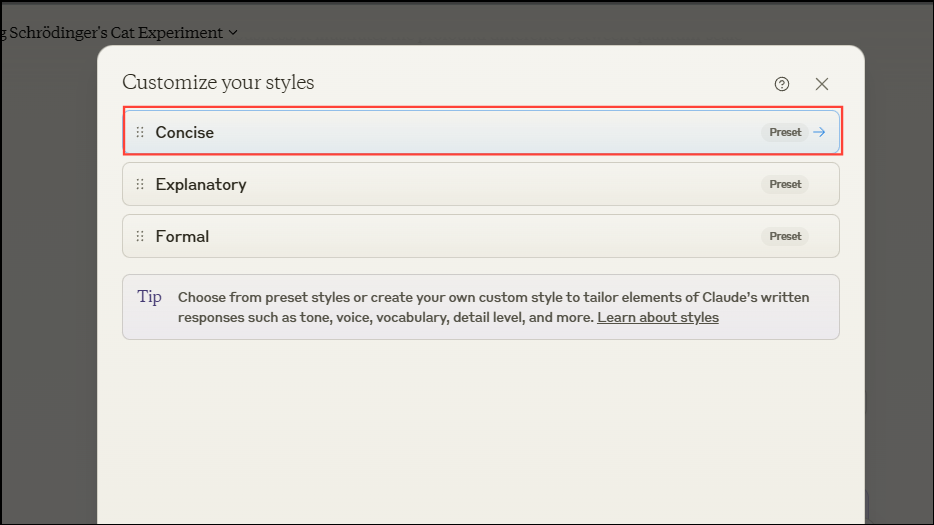
- Then click on the 'Options' dropdown menu and select 'Hide preset style'.
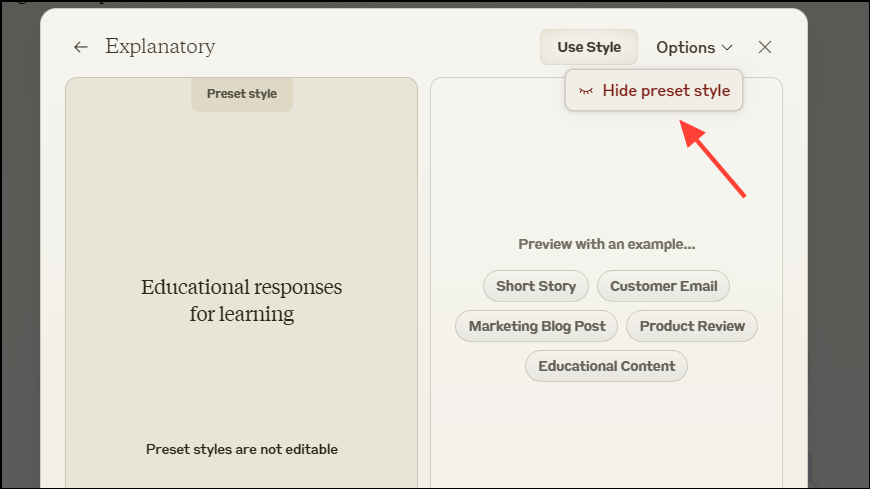
- If you want to unhide hidden styles, click on 'Reset preset styles' on the bottom right.
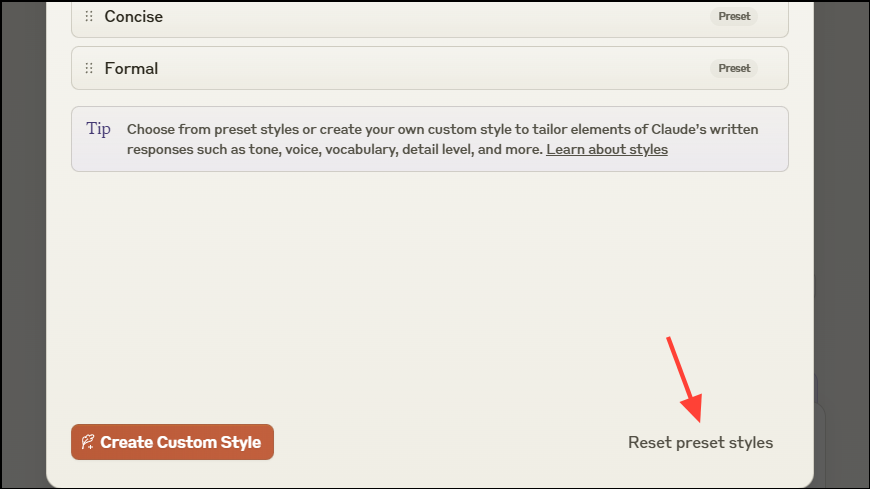
Creating and using custom styles
In addition to using preset styles, you can create your own ones and train Claude AI to use those. There are two ways by which you can do so.
Method 1: Uploading writing samples
- Click on the styles dropdown menu and select 'Create and Edit Styles'.

- Then click on the 'Create Custom Style' button.

- Now, click on 'Add Writing Sample' on the right and you will be able to either upload a sample of your writing or paste text in the provided area directly.

- Once you've uploaded a sample or pasted the text you want to use to train the AI, click on the 'Create Style' button.

- Wait for Claude to analyze your style. You can then preview the style in the form of a short story, email, product review, etc., by clicking on the respective option on the right.
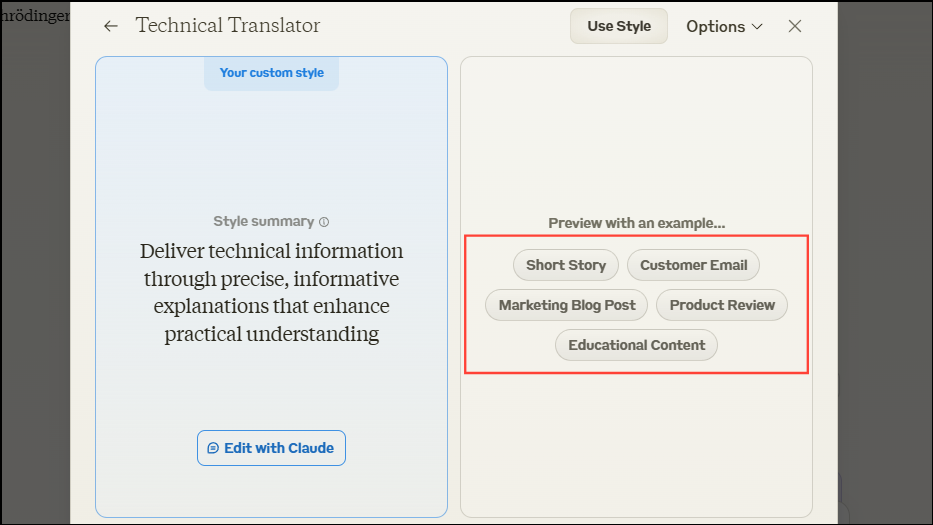
- You can then use the newly created custom style by clicking on the 'Use Style' button at the top.

Method 2: Describing your style
- Start in the same manner as before by clicking on the 'Create and Edit Styles' button in the styles dropdown menu.

- Click on the 'Create Custom Style' button.

- Instead of the 'Add Writing Sample' option, click on 'Describe style instead' on the bottom right.

- Select a starting point from the available options on the left and then describe how you want Claude to respond by typing instructions in the box on the right.
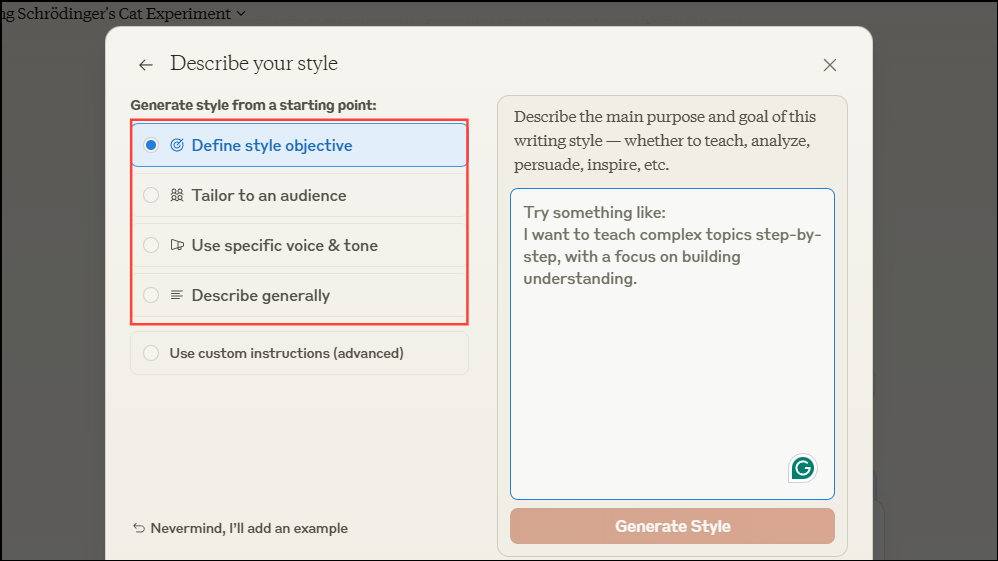
- If you want to add your own instructions, click on 'Use custom instructions (advanced)'. Then you can type your instructions in the box on the right.
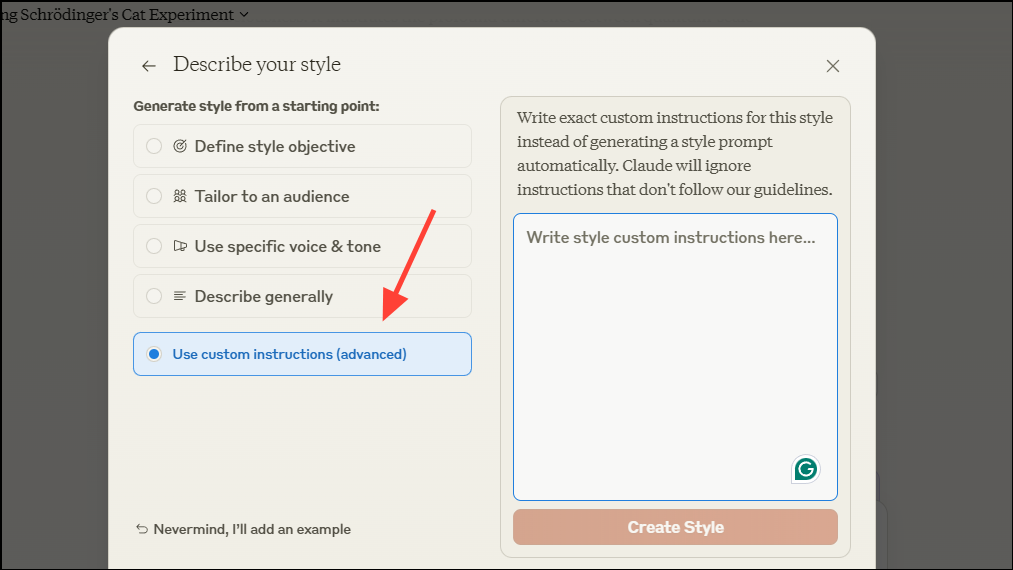
- If you want, you can go back and use the 'Add Writing Sample' option by clicking on the 'Nevermind, I'll add an example' option on the bottom left.
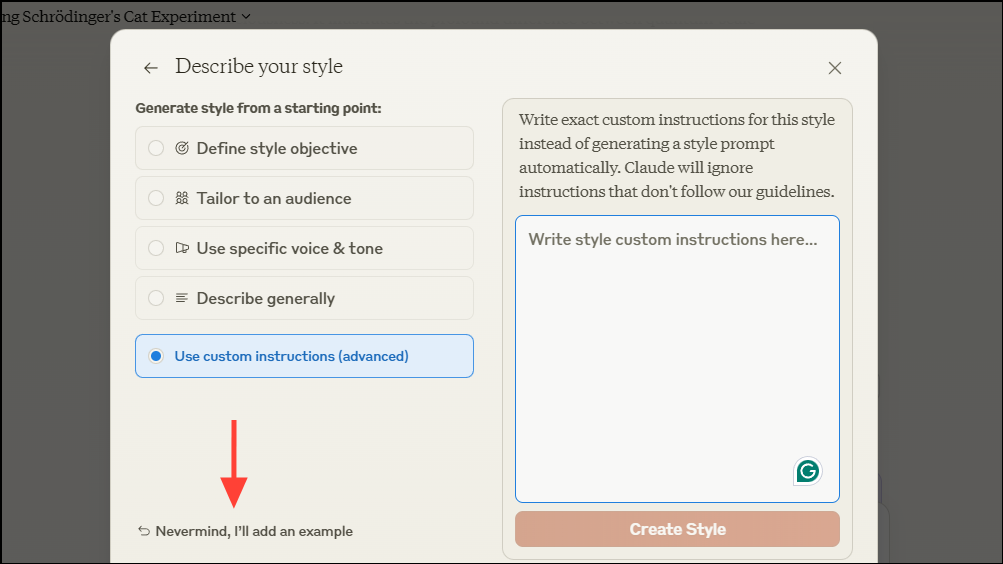
- Once you've described your style by selecting a starting point or providing your own instructions, click on the 'Generate Style' button on the right.
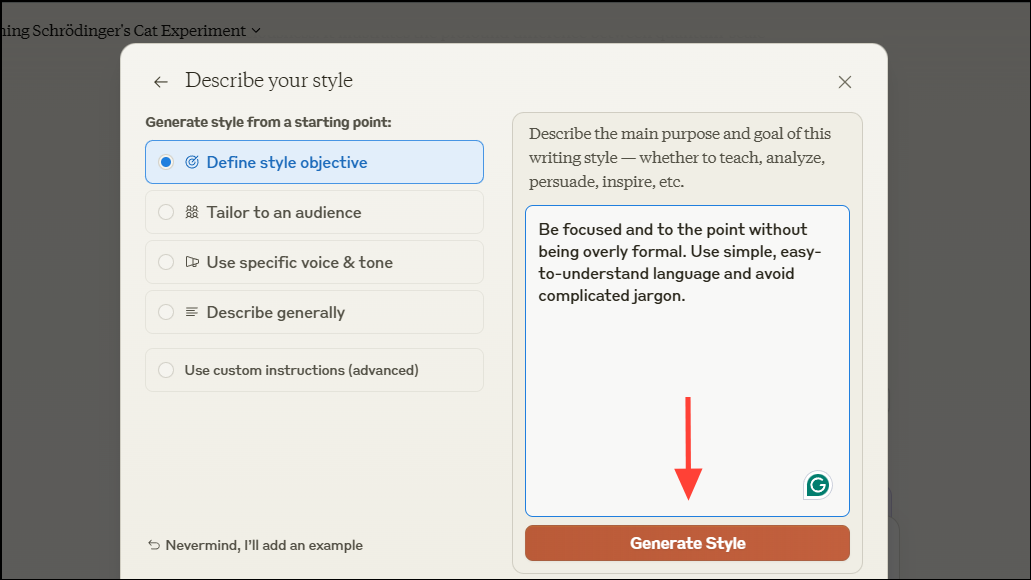
- Again, you can preview the generated style and if you're satisfied, start using it by clicking on the 'Use Style' button.
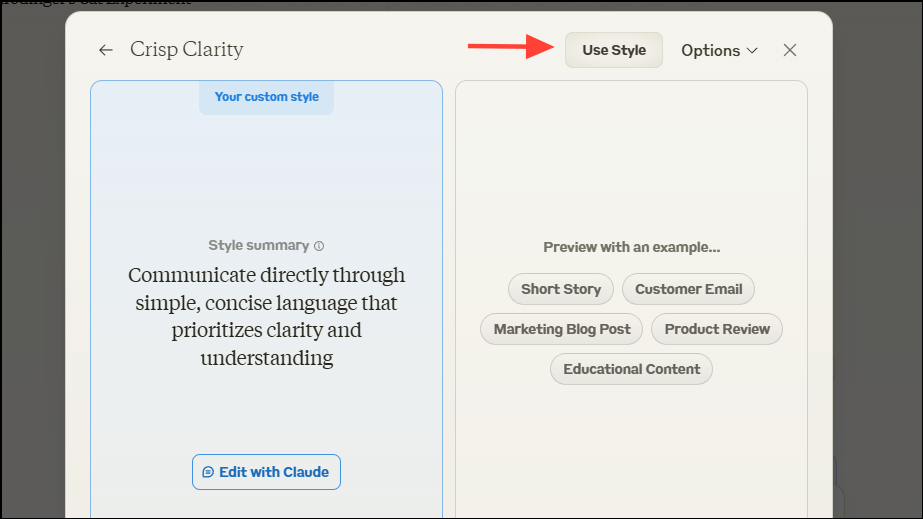
Managing custom styles
- Click on the styles dropdown menu and select 'Create and Edit Styles'.

- Now, you can click and drag the available styles to reorder them as you like.

- You can also rename and delete styles by clicking on a style name and then clicking on the 'Options' dropdown menu.
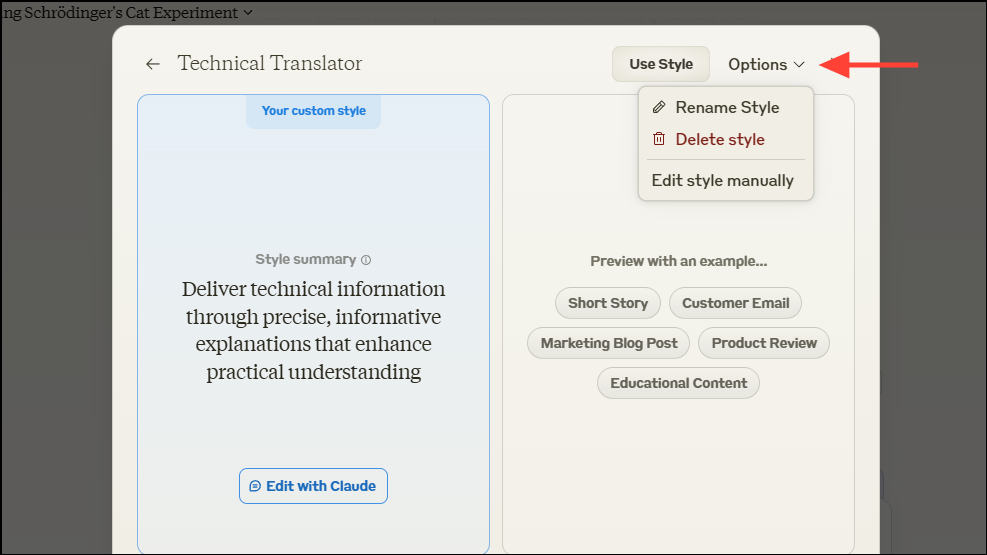
- To edit a style, click on 'Edit with Claude' on the left.

- You can then type in instructions in the text box on the bottom left asking Claude to edit the style as you want. Once you're done, you can preview the edited style or click on the 'Save Changes' button at the top.

Things to know
- When you describe your preferred communication style, provide as many details as possible. This will help Claude get a better idea of what you require.
- The preview feature can be quite handy in letting you know how a style sounds. If you don't like the results, you can edit a style before saving it for use.
- For best results, switch between different conversation styles, including preset and custom ones when interacting with Claude.
- Considering the audience for which you are writing and then creating or selecting a style will help you communicate better and more effectively.

